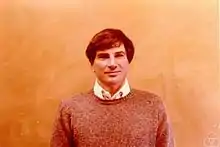
Edward Baldwin Curtis (born 13 March 1933 in Newburyport, Massachusetts) is an American mathematician.
Life and career
Edward Curtis received his bachelor's degree from Harvard University in 1954. After graduate study from 1958 to 1959 at the University of Oxford, he returned to Harvard and earned a Ph.D. there in 1962. His thesis The Lower Central Series for Free Group Complexes was supervised by Raoul Bott. Curtis became an instructor at the Massachusetts Institute of Technology (1962–1964), assistant professor (1964–1967), and associate professor (1967–1970). In 1970 he became a professor at the University of Washington in Seattle, where he remained until his retirement as professor emeritus.
His research interests include graph theory and flow networks. In 1967 for his studies on algebraic topology he received a Guggenheim Fellowship[1][2] and in 1972 the Leroy P. Steele Prize for his paper Simplicial homotopy theory.[3]
Works
- The Lower Central Series for Free Group Complexes. Thesis (Ph.D.). Harvard University. 1962.
{{cite book}}: CS1 maint: location missing publisher (link) - Curtis, Edward B. (1971). "Simplicial homotopy theory". Advances in Mathematics. 6 (2): 107–109. doi:10.1016/0001-8708(71)90015-6. MR 0279808.
- with James A. Morrow: Inverse problems for electrical networks. Series on applied mathematics. Vol. 13. Singapore: World Scientific. 2000. ISBN 981-02-4174-7.
Sources
References
- ↑ "Curtis, Edward Baldwin - Guggenheim Foundation". Retrieved 2013-01-29.
- ↑ "Faculty members given Guggenheim fellowships" (PDF). The MIT Tech. M.I.T. 87: 5. April 4, 1967.
- ↑ "Steele Prize for Edward B. Curtis". Archived from the original on 2016-07-15. Retrieved 2013-01-29.
External links
- Edward B. Curtis at the Mathematics Genealogy Project
- Edward B. Curtis at the math faculty website of the University of Washington (with photograph)
- Website of Edward B. Curtis at the U. of Washington
- Photograph of Edward Baldwin Curtis in MIT Museum
- Publications by Edward B. Curtis at the website of the AMS